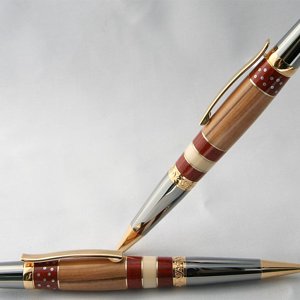Sometimes (but not always), I find tiny white spots when I turn cultured marble (fauxstone & simstone)
I turn at 3500 RPM using negative rake carbide tips on Easy Tools.
After using my tools, I sand using 5 papers from 150 grit up to 600 grit; then I wet sand with micromesh.
At that point, on close inspection, I can see the following:
(a) Little white spots that dot the surface of the blank
(b) Almost all of them are round
(c) They are tiny, maybe 0.2mm in diameter
(d) They break the surface; i.e., when I rotate the blank under bright light I can see that the spot is a hole in an otherwise smooth surface.
I haven't found a good way to correct the problem after the fact.
I welcome all suggestions on how to deal with this!
I turn at 3500 RPM using negative rake carbide tips on Easy Tools.
After using my tools, I sand using 5 papers from 150 grit up to 600 grit; then I wet sand with micromesh.
At that point, on close inspection, I can see the following:
(a) Little white spots that dot the surface of the blank
(b) Almost all of them are round
(c) They are tiny, maybe 0.2mm in diameter
(d) They break the surface; i.e., when I rotate the blank under bright light I can see that the spot is a hole in an otherwise smooth surface.
I haven't found a good way to correct the problem after the fact.
I welcome all suggestions on how to deal with this!

